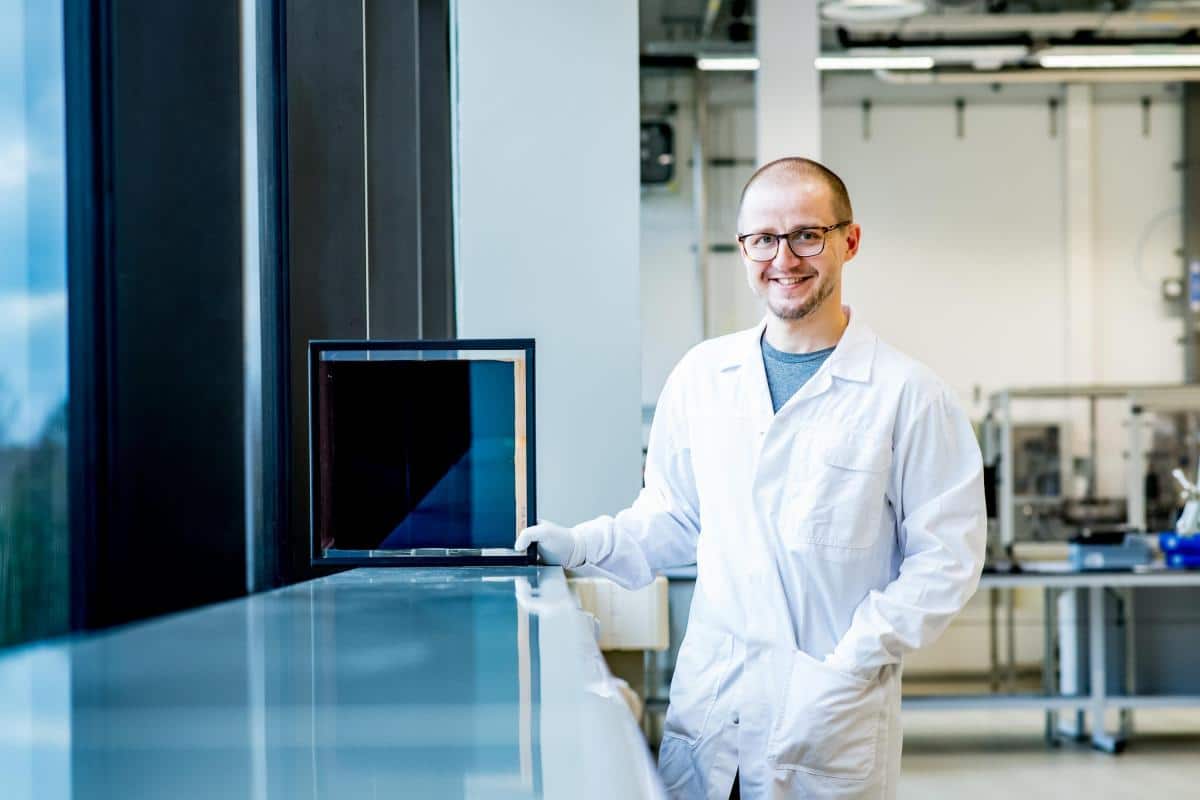Bart Vermang wins KVAB prize for technical sciences
Professor Bart Vermang (UHasselt/imec/EnergyVille) receives the highly regarded ‘Laureate in the Class of Technical Sciences’ award from the Royal Flemish Academy of Belgium for Science and Art (KVAB). Accompanying the award, Prof. dr. Vermang will receive 10,000 euros for his research into new materials for renewable energy applications. “This prize is a very nice recognition for the work of my entire team”, says Prof. Bart Vermang.
The KVAB annually awards this research award to a young, promising researcher in Flanders (aged under 40) who excels in the field of technical sciences. International projects and collaborations, publication numbers and the development of an own research team are some of the criteria the jury takes into account. Michaël De Volder (2011), Dries Van Thourhout (2012), Gunther Roelkens (2018) and Steven Latré (2019) have previously been awarded as laureates for imec. For UHasselt it is the first time that this prize has been awarded to one of their professors. Bart Vermang will officially receive the prize on 5 February during an award ceremony.
“This award is a real team effort. As head of a research group of about 25 researchers at Hasselt University and imec within the collaboration of EnergyVille and Solliance, I am extremely proud to receive the award in the Class of Technical Sciences. The corona pandemic did not make it easier to carry out scientific research in groups at an international top level, this is a very nice boost for all our work,” says Bart Vermang.

Thin film materials
In his research Bart Vermang focuses on solar energy. Using so-called thin film materials, he and his team are investigating numerous renewable energy applications. Thin-film materials are wafer-thin materials just a few micrometers thick that can absorb as much light as traditional silicon solar panels, which are hundreds of times thicker. “Thin film materials have an enormous potential. Not only are they cheaper, because you need less material to make them. They are also very flexible, which means that they can be easily integrated on various surfaces such as glass or metal foils, which means that there are better integration options for buildings, cars and roads,” says Bart Vermang.
From CO2 to fuels
In 2016 Bart Vermang already received a European ERC research grant of 2 million euros for his research. In 2020, as coordinator within the European consortium PERCISTAND, he succeeded in generating as much energy with a thin-film solar cell as a traditional silicon solar cell, making this material competitive with the traditional solar panel sector. Within another research project, Bart Vermang focuses on developing photovoltaic applications that are transparent to visible light and can therefore be integrated into glass windows of buildings. He also processes the same materials in photoelectrochemical applications, where sunlight is used to remove CO2 from the air and convert it into synthetic, green fuel.
Vergroenen energievoorraad
“If we want to make our energy supply more sustainable and reduce CO2 emissions, we have to focus on these types of innovative technologies. Developing more efficient applications, using cheaper materials and ensuring that the end product can be integrated even more simply and aesthetically are my motivations. Only this way we will succeed in realizing the necessary energy transition that we are facing due to global warming”, concludes Bart Vermang.